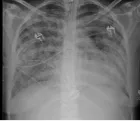Table of Contents
Upper gut bacterial overgrowth is a potential mechanism for Glucose Malabsorption after Vertical Sleeve Gastrectomy
Published on: 31st October, 2017
OCLC Number/Unique Identifier: 7317655960
In 1955, nutrient malabsorption following upper gut surgery was shown to be related to altered upper gut microbiome. In individuals with abdominal symptoms after Roux-en-Y gastric bypass, we have reported that small intestinal glucose malabsorption is associated with upper gut bacterial overgrowth. We hypothesize that individuals with abdominal symptoms after vertical sleeve gastrectomy have glucose malabsorption associated with upper gut bacterial overgrowth, and to test this hypothesis, bacterial overgrowth and potential glucose malabsorption are examined after sleeve gastrectomy. This is a retrospective study of individuals with medically-complicated obesity who underwent sleeve gastrectomy from 2013 to 2016 with subsequent glucose hydrogen breath testing to evaluate abdominal symptoms. A fasting breath hydrogen or methane of ≥10 PPM or rise of ≥8 PPM ≤45 minutes after oral glucose is bacterial overgrowth, while glucose malabsorption is a second rise of ≥8 PPM at >45 minutes. Seven females (mean age: 48.0 years; mean body mass index at surgery: 45.7 kg/m2) are described. Five subjects (71%) have an early rise in hydrogen or methane, while three (43%) have a second rise in hydrogen or methane >45 minutes after glucose. The mean percent excess weight loss at one year was 40% in three individuals with a second peak and 46% in four subjects without a second peak. After sleeve gastrectomy, subjects have glucose malabsorption associated with the presence of bacterial overgrowth. Completion of a larger prospective study is needed to confirm and expanding upon these findings. Further work should examine the potential effects of bacterial overgrowth on expression of intestinal glucose transporters.
Study of body composition, physiological variables in Grade III obese submitted to arm ergometer test
Published on: 23rd August, 2017
OCLC Number/Unique Identifier: 7317606261
Introduction: Number of obese people is growing on a daily basis in Brazil, including morbid obese ones, but there is still a lack of studies with this subject. Due to this, the main goal of this study was to identify body profile, physiological variables behavior and oxygen consumption in grade III obese women, submitted to an ergospirometric test in arm ergometer.
Method: Take part in this study, thirteen (13) female grade III obese patients between 20 and 40 years. They were submitted to an electric bioimpedance test for body composition measurement and an Ergospirometric test in arm ergometer for oxygen consumption, heart rate, and oxygen saturation, systolic and diastolic arterial pressure, resting and after exercises, analysis.
Results: The patients revealed a BMI of 46.5±3.81 kg/m², 51.9±1.59% of body fat percentage. The patients reached 168.2±4.57bpm of heart rate, didn’t make any hypertensive response to the effort reaching an arterial pressure of 171.1±22.15mmHg x 87.5±4.18mmHg. Oxygen saturation was 98±0.71% and oxygen consumption peak was, also in average, 12.3±2.75ml.kg.min-1.
Conclusion: It was verified that there was no oxygen saturation drop nor hypertensive response and all of the patients reached the maximum heart rate.
Behavioral factors of Abdominal Obesity and effects of lifestyle changes with Fiber Adequacy
Published on: 25th July, 2017
OCLC Number/Unique Identifier: 7317598452
The etiology of abdominal obesity is multifactorial and has environmental factors as its most expressive risk factors. This study cross-sectional analyzed the association of abdominal fatness with physical inactivity and food inadequacy of 1,557 subjects, both genders, over 35yrs. old, enrolled in an ongoing epidemiological study. Waist circumference (WC) was the primary variable and demographic, social-economic, anthropometric and dietary intake data, were the co-variables. NCEP-ATP III, WHO, IPAQ-long (version 8) and Healthy Eating Index were used for functional definition of variables. Furthermore, longitudinal data from 50 subjects in an exercise protocol for 10 week receiving either regular diet (G1, n=22) or 30g fiber adequacy (G2; =28), were analyzed. The performed statistical analyses used software SAS for Windows, version 9.1 with p=0.05. In a predominantly female sample (74%), 76% aging 35-60yrs, 64% completed elementary school, 73% were living in a low income household, 77.5% overweight. The 62.5% presenting altered WC values were predominantly older, presented higher body fatness, and were consuming low variety-poor quality diet rich in fat (mainly saturated) and lower in fruit. WC correlated negatively with fruit intake and aerobic capacity (VO2max) but only carbohydrate (positive) and fruit intake (negative) were considered independent risk factors for abdominal obesity. In the longitudinal study, both G1 and G2 groups were similar at baseline and G1 maintained the anthropometry values throughout the experiment. Conversely, G2 decreased total body (4%) and WC (7%) fatness, reducing severe obesity by 16%, minimally affecting overweight and eutrophic rates. G2 presented 211% increase in fiber intake and 150% increase in plasma beta-carotene (colorful-fiber marker). Thus, in conclusion, recommended dietary fiber intake (increased fruit and low CHO intake) and physical activity would be the recommended changes against abdominal obesity and, by associating both physical exercises and dietary fiber there was indeed a decrease in abdominal fatness and obesity, predominantly at its higher grade.
The interaction between photonic technology and physical exercise: The action of low-level laser therapy
Published on: 20th June, 2017
OCLC Number/Unique Identifier: 7317592003
Introduction: Obesity is a global-level epidemic. Together with this disease, called chronic subclinical inflammatory disease, many other diseases, known as comorbidities, arise.
Objective: To show that the association between low-level laser therapy and physical exercise is supported, by experimental and clinical studies, being an instrument that maximizes the treatment of obesity as well as its comorbidities.
Conclusion: This manuscript brings a compendium of accomplished work by our group that allows understand the mechanism base of interaction between the photonic technology and the physical exercise, allowing to potentiate the treatment of the obesity.
Cardiac Autonomic Modulation in children and Preadolescents obese
Published on: 23rd May, 2017
OCLC Number/Unique Identifier: 7317595345
Alterations in cardiac autonomic modulation of children and obese preadolescents have attracted the attention of researchers around the world. These alterations cause disorders in the cardiac autonomic control and can interfere in cardiac output and in the homeostatic actions that depends on the cardiovascular system action.
Hypoglycemia by Ginseng in type 2 Diabetic Patient: Case Report
Published on: 9th February, 2017
OCLC Number/Unique Identifier: 7317650902
Ginseng extracts are often used as adaptogen to improve mental performances and well being, helping to overcome stress. Thus, in our times a lot of ginseng extracts are continuously produced and sold into commercial channels. Both Asian and Korean red ginseng (Panax ginseng) and American ginseng (Panax quinquefolius) are the most extensively used and researched. Both Panax ginseng and Panax quinquefolium contain different types of saponins, also known as ginsenosides, which are the substances that give ginseng medicinal properties. Human and animal studies showed that ginseng extracts can also have hypoglycemic effects. The mechanisms by which ginseng reduces blood glucose levels are unclear; some mechanisms have been proposed to explain its hypoglycemic effect, especially modulating effects on insulin sensitization and/or insulin secretion and regulating actions on digestion and intestinal absorption. We describe a case of hypoglycemia by ginseng in type 2 diabetic patient treated with oral hypoglycemic agents. Although, in order to provide better assessments of a sure anti-diabetic efficacy of ginseng, larger and longer randomized controlled clinical trials will be required, in our case we think that we have enough evidence to believe that the cause of hypoglycemia was ginseng. Obviously, this report should not be taken as a proof of the hypoglycemic effect of ginseng, nor it wants to be a suggestion to use ginseng in the treatment of diabetes; instead, it wants to be an alert for patients and clinicians to avoid hypoglycemia in daily clinical practice.

If you are already a member of our network and need to keep track of any developments regarding a question you have already submitted, click "take me to my Query."

















































































































































